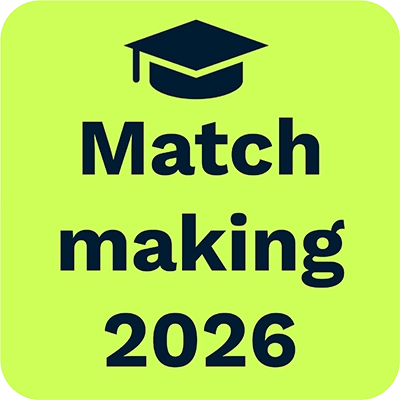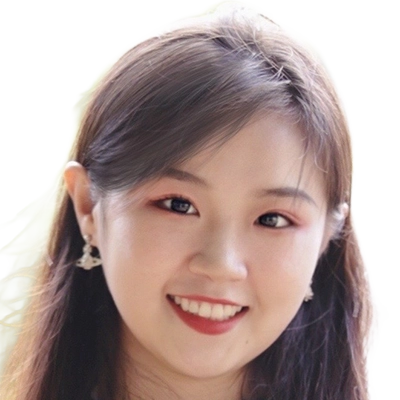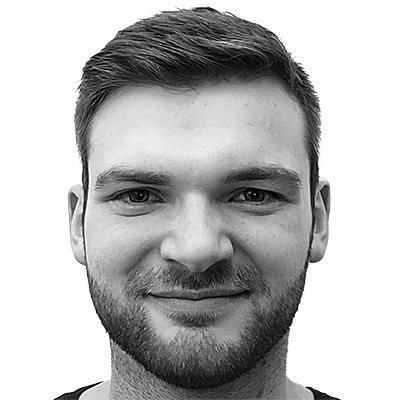Research Group David Rügamer
David Rügamer
is Associate Professor and Group Leader of the Data Science Group at LMU Munich.
His research involves the development of uncertainty quantification approaches for statistical and machine learning models, the unification of concepts from statistics and deep learning, and sparsification of neural networks.
Team members @MCML
PhD Students
Recent News @MCML
Publications @MCML
2025
[102]
J. Kobialka • E. Sommer • J. Kwon • D. Dold • D. Rügamer
On the Interplay of Priors and Overparametrization in Bayesian Neural Network Posteriors.
EIML @EurIPS 2025 - Workshop on Epistemic Intelligence in Machine Learning at the European Conference on Information Processing Systems. Copenhagen, Denmark, Dec 03-05, 2025. To be published.
On the Interplay of Priors and Overparametrization in Bayesian Neural Network Posteriors.
EIML @EurIPS 2025 - Workshop on Epistemic Intelligence in Machine Learning at the European Conference on Information Processing Systems. Copenhagen, Denmark, Dec 03-05, 2025. To be published.
[101]
R. D. Paul • J. Seiffarth • D. Rügamer • H. Scharr • K. Nöh
Reliable Cell Trackers Say 'I dunno!'.
MedEurIPS @EurIPS 2025 - Workshop Medical Imaging meets EurIPS at the European Conference on Information Processing Systems. Copenhagen, Denmark, Dec 03-05, 2025. To be published. Preprint available. URL
Reliable Cell Trackers Say 'I dunno!'.
MedEurIPS @EurIPS 2025 - Workshop Medical Imaging meets EurIPS at the European Conference on Information Processing Systems. Copenhagen, Denmark, Dec 03-05, 2025. To be published. Preprint available. URL
[100]

C. Kolb • L. Frost • B. Bischl • D. Rügamer
Differentiable Sparsity via D-Gating: Simple and Versatile Structured Penalization.
NeurIPS 2025 - 39th Conference on Neural Information Processing Systems. San Diego, CA, USA, Nov 30-Dec 07, 2025. Spotlight Presentation. To be published. Preprint available. URL
Differentiable Sparsity via D-Gating: Simple and Versatile Structured Penalization.
NeurIPS 2025 - 39th Conference on Neural Information Processing Systems. San Diego, CA, USA, Nov 30-Dec 07, 2025. Spotlight Presentation. To be published. Preprint available. URL
[99]
R. Kassoumeh • D. Rügamer • H. Oppel
Enhancing Heavy Rain Nowcasting with Multimodal Data: Integrating Radar and Satellite Observations.
Preprint (Nov. 2025). arXiv GitHub
Enhancing Heavy Rain Nowcasting with Multimodal Data: Integrating Radar and Satellite Observations.
Preprint (Nov. 2025). arXiv GitHub
[98]

R. D. Paul • J. Seiffarth • D. Rügamer • K. Nöh • H. Scharr
How To Make Your Cell Tracker Say 'I dunno!'.
ICCV 2025 - IEEE/CVF International Conference on Computer Vision. Honolulu, Hawai’i, Oct 19-23, 2025. To be published. Preprint available. URL
How To Make Your Cell Tracker Say 'I dunno!'.
ICCV 2025 - IEEE/CVF International Conference on Computer Vision. Honolulu, Hawai’i, Oct 19-23, 2025. To be published. Preprint available. URL
[97]

N. Lercari • A. Fandrei • Z. Zellmann • Y. Du • M. Yacoub • D. Calderone • R. Brancato • S. Scerra • D. Tanasi • R. Lanteri • D. Rügamer
Semi-automated LiDAR Vegetation Classification for Mediterranean Archaeology: Designing a Pipeline Leveraging a Multi-Layer Stacked Ensemble Approach.
The International Archives of the Photogrammetry, Remote Sensing and Spatial Information Sciences XLVIII-M-9-2025. Oct. 2025. DOI GitHub
Semi-automated LiDAR Vegetation Classification for Mediterranean Archaeology: Designing a Pipeline Leveraging a Multi-Layer Stacked Ensemble Approach.
The International Archives of the Photogrammetry, Remote Sensing and Spatial Information Sciences XLVIII-M-9-2025. Oct. 2025. DOI GitHub
[96]
D. Köhler • D. Rügamer • L. Boyle • K. Maloney • M. Schmid
Achieving interpretable machine learning by functional decomposition of black-box models into explainable predictor effects.
npj Artificial Intelligence 1.34. Oct. 2025. DOI
Achieving interpretable machine learning by functional decomposition of black-box models into explainable predictor effects.
npj Artificial Intelligence 1.34. Oct. 2025. DOI
[95]

P. Kopper • D. Rügamer • R. Sonabend • B. Bischl • A. Bender
On Training Survival Models with Scoring Rules.
ECML-PKDD 2025 - European Conference on Machine Learning and Principles and Practice of Knowledge Discovery in Databases. Porto, Portugal, Sep 15-19, 2025. DOI
On Training Survival Models with Scoring Rules.
ECML-PKDD 2025 - European Conference on Machine Learning and Principles and Practice of Knowledge Discovery in Databases. Porto, Portugal, Sep 15-19, 2025. DOI
[94]

E. Özeren • A. Ulbrich • S. Filimon • D. Rügamer • A. Bender
Enhancing Traffic Accident Classifications: Application of NLP Methods for City Safety.
ECML-PKDD 2025 - European Conference on Machine Learning and Principles and Practice of Knowledge Discovery in Databases. Porto, Portugal, Sep 15-19, 2025. DOI
Enhancing Traffic Accident Classifications: Application of NLP Methods for City Safety.
ECML-PKDD 2025 - European Conference on Machine Learning and Principles and Practice of Knowledge Discovery in Databases. Porto, Portugal, Sep 15-19, 2025. DOI
[93]

M. Arpogaus • T. Kneib • T. Nagler • D. Rügamer
Hybrid Bernstein Normalizing Flows for Flexible Multivariate Density Regression with Interpretable Marginals.
UAI 2025 - 41st Conference on Uncertainty in Artificial Intelligence. Rio de Janeiro, Brazil, Jul 21-25, 2025. URL
Hybrid Bernstein Normalizing Flows for Flexible Multivariate Density Regression with Interpretable Marginals.
UAI 2025 - 41st Conference on Uncertainty in Artificial Intelligence. Rio de Janeiro, Brazil, Jul 21-25, 2025. URL
[92]

S. Müller • A. Reuter • N. Hollmann • D. Rügamer • F. Hutter
Position: The Future of Bayesian Prediction Is Prior-Fitted.
ICML 2025 - 42nd International Conference on Machine Learning. Vancouver, Canada, Jul 13-19, 2025. URL
Position: The Future of Bayesian Prediction Is Prior-Fitted.
ICML 2025 - 42nd International Conference on Machine Learning. Vancouver, Canada, Jul 13-19, 2025. URL
[91]

T. Pielok • B. Bischl • D. Rügamer
Revisiting Unbiased Implicit Variational Inference.
ICML 2025 - 42nd International Conference on Machine Learning. Vancouver, Canada, Jul 13-19, 2025. URL
Revisiting Unbiased Implicit Variational Inference.
ICML 2025 - 42nd International Conference on Machine Learning. Vancouver, Canada, Jul 13-19, 2025. URL
[90]

A. Reuter • T. G. J. Rudner • V. Fortuin • D. Rügamer
Can Transformers Learn Full Bayesian Inference in Context?
ICML 2025 - 42nd International Conference on Machine Learning. Vancouver, Canada, Jul 13-19, 2025. URL
Can Transformers Learn Full Bayesian Inference in Context?
ICML 2025 - 42nd International Conference on Machine Learning. Vancouver, Canada, Jul 13-19, 2025. URL
[89]

R. Schulte • D. Rügamer • T. Nagler
Adjustment for Confounding using Pre-Trained Representations.
ICML 2025 - 42nd International Conference on Machine Learning. Vancouver, Canada, Jul 13-19, 2025. URL
Adjustment for Confounding using Pre-Trained Representations.
ICML 2025 - 42nd International Conference on Machine Learning. Vancouver, Canada, Jul 13-19, 2025. URL
[88]
V. M. Singh • A. G. V. Asiares • L. S. Schuhmacher • K. Rendall • S. Weißbrod • D. Rügamer • I. Körte
An Interpretable Representation Learning Approach for Diffusion Tensor Imaging.
MIDL 2025 - Medical Imaging with Deep Learning. Salt Lake City, UT, USA, Jul 09-11, 2025. To be published. Preprint available. arXiv
An Interpretable Representation Learning Approach for Diffusion Tensor Imaging.
MIDL 2025 - Medical Imaging with Deep Learning. Salt Lake City, UT, USA, Jul 09-11, 2025. To be published. Preprint available. arXiv
[87]

T. Weber • M. Ingrisch • B. Bischl • D. Rügamer
Preventing Sensitive Information Leakage via Post-hoc Orthogonalization with Application to Chest Radiograph Embeddings.
PAKDD 2025 - 29th Pacific-Asia Conference on Knowledge Discovery and Data Mining. Sydney, Australia, Jun 10-13, 2025. DOI GitHub
Preventing Sensitive Information Leakage via Post-hoc Orthogonalization with Application to Chest Radiograph Embeddings.
PAKDD 2025 - 29th Pacific-Asia Conference on Knowledge Discovery and Data Mining. Sydney, Australia, Jun 10-13, 2025. DOI GitHub
[86]

D. Dold • J. Kobialka • N. Palm • E. Sommer • D. Rügamer • O. Dürr
Paths and Ambient Spaces in Neural Loss Landscapes.
AISTATS 2025 - 28th International Conference on Artificial Intelligence and Statistics. Mai Khao, Thailand, May 03-05, 2025. URL
Paths and Ambient Spaces in Neural Loss Landscapes.
AISTATS 2025 - 28th International Conference on Artificial Intelligence and Statistics. Mai Khao, Thailand, May 03-05, 2025. URL
[85]

R. Schulte • D. Rügamer
Additive Model Boosting: New Insights and Path(ologie)s.
AISTATS 2025 - 28th International Conference on Artificial Intelligence and Statistics. Mai Khao, Thailand, May 03-05, 2025. Oral Presentation. URL
Additive Model Boosting: New Insights and Path(ologie)s.
AISTATS 2025 - 28th International Conference on Artificial Intelligence and Statistics. Mai Khao, Thailand, May 03-05, 2025. Oral Presentation. URL
[84]
J. Kobialka • E. Sommer • J. Kwon • D. Dold • D. Rügamer
Approximate Posteriors in Neural Networks: A Sampling Perspective.
AABI 2025 - 7th Symposium on Advances in Approximate Bayesian Inference collocated with the 13th International Conference on Learning Representations. Singapore, Apr 29, 2025. To be published. Preprint available. URL
Approximate Posteriors in Neural Networks: A Sampling Perspective.
AABI 2025 - 7th Symposium on Advances in Approximate Bayesian Inference collocated with the 13th International Conference on Learning Representations. Singapore, Apr 29, 2025. To be published. Preprint available. URL
[83]
T. Nagler • D. Rügamer
Uncertainty Quantification for Prior-Fitted Networks using Martingale Posteriors.
AABI 2025 - 7th Symposium on Advances in Approximate Bayesian Inference collocated with the 13th International Conference on Learning Representations. Singapore, Apr 29, 2025. To be published. Preprint available. URL
Uncertainty Quantification for Prior-Fitted Networks using Martingale Posteriors.
AABI 2025 - 7th Symposium on Advances in Approximate Bayesian Inference collocated with the 13th International Conference on Learning Representations. Singapore, Apr 29, 2025. To be published. Preprint available. URL
[82]
T. Nagler • D. Rügamer
Uncertainty Quantification for Prior-Fitted Networks using Martingale Posteriors.
FPI @ICLR 2025 - Workshop on Frontiers in Probabilistic Inference: Learning meets Sampling at the 13th International Conference on Learning Representations. Singapore, Apr 24-28, 2025. arXiv URL
Uncertainty Quantification for Prior-Fitted Networks using Martingale Posteriors.
FPI @ICLR 2025 - Workshop on Frontiers in Probabilistic Inference: Learning meets Sampling at the 13th International Conference on Learning Representations. Singapore, Apr 24-28, 2025. arXiv URL
[81]
A. Reuter • T. G. J. Rudner • V. Fortuin • D. Rügamer
Can Transformers Learn Full Bayesian Inference in Context?
FPI @ICLR 2025 - Workshop on Frontiers in Probabilistic Inference: Learning meets Sampling at the 13th International Conference on Learning Representations. Singapore, Apr 24-28, 2025. arXiv URL
Can Transformers Learn Full Bayesian Inference in Context?
FPI @ICLR 2025 - Workshop on Frontiers in Probabilistic Inference: Learning meets Sampling at the 13th International Conference on Learning Representations. Singapore, Apr 24-28, 2025. arXiv URL
[80]
D. Rundel • E. Sommer • B. Bischl • D. Rügamer • M. Feurer
Efficiently Warmstarting MCMC for BNNs.
FPI @ICLR 2025 - Workshop on Frontiers in Probabilistic Inference: Learning meets Sampling at the 13th International Conference on Learning Representations. Singapore, Apr 24-28, 2025. URL
Efficiently Warmstarting MCMC for BNNs.
FPI @ICLR 2025 - Workshop on Frontiers in Probabilistic Inference: Learning meets Sampling at the 13th International Conference on Learning Representations. Singapore, Apr 24-28, 2025. URL
[79]
J. Kobialka • E. Sommer • J. Kwon • D. Dold • D. Rügamer
Approximate Posteriors in Neural Networks: A Sampling Perspective.
FPI @ICLR 2025 - Workshop on Frontiers in Probabilistic Inference: Learning meets Sampling at the 13th International Conference on Learning Representations. Singapore, Apr 24-28, 2025. Spotlight Presentation. URL
Approximate Posteriors in Neural Networks: A Sampling Perspective.
FPI @ICLR 2025 - Workshop on Frontiers in Probabilistic Inference: Learning meets Sampling at the 13th International Conference on Learning Representations. Singapore, Apr 24-28, 2025. Spotlight Presentation. URL
[78]

C. Kolb • T. Weber • B. Bischl • D. Rügamer
Deep Weight Factorization: Sparse Learning Through the Lens of Artificial Symmetries.
ICLR 2025 - 13th International Conference on Learning Representations. Singapore, Apr 24-28, 2025. URL
Deep Weight Factorization: Sparse Learning Through the Lens of Artificial Symmetries.
ICLR 2025 - 13th International Conference on Learning Representations. Singapore, Apr 24-28, 2025. URL
[77]

Y. Li • D. Rügamer • B. Bischl • M. Rezaei
Calibrating LLMs with Information-Theoretic Evidential Deep Learning.
ICLR 2025 - 13th International Conference on Learning Representations. Singapore, Apr 24-28, 2025. URL GitHub
Calibrating LLMs with Information-Theoretic Evidential Deep Learning.
ICLR 2025 - 13th International Conference on Learning Representations. Singapore, Apr 24-28, 2025. URL GitHub
[76]

E. Sommer • J. Robnik • G. Nozadze • U. Seljak • D. Rügamer
Microcanonical Langevin Ensembles: Advancing the Sampling of Bayesian Neural Networks.
ICLR 2025 - 13th International Conference on Learning Representations. Singapore, Apr 24-28, 2025. URL
Microcanonical Langevin Ensembles: Advancing the Sampling of Bayesian Neural Networks.
ICLR 2025 - 13th International Conference on Learning Representations. Singapore, Apr 24-28, 2025. URL
[75]
C. Kolb • B. Bischl • D. Rügamer
Differentiable Attention Sparsity via Structured D-Gating.
SLLM @ICLR 2025 - Workshop on Sparsity in LLMs at the 13th International Conference on Learning Representations. Singapore, Apr 24-28, 2025. URL
Differentiable Attention Sparsity via Structured D-Gating.
SLLM @ICLR 2025 - Workshop on Sparsity in LLMs at the 13th International Conference on Learning Representations. Singapore, Apr 24-28, 2025. URL
[74]
A. Reuter • T. G. J. Rudner • V. Fortuin • D. Rügamer
Can Transformers Learn Full Bayesian Inference in Context?
SynthData @ICLR 2025 - Workshop SynthData: Will Synthetic Data Finally Solve the Data Access Problem? at the 13th International Conference on Learning Representations. Singapore, Apr 24-28, 2025. URL
Can Transformers Learn Full Bayesian Inference in Context?
SynthData @ICLR 2025 - Workshop SynthData: Will Synthetic Data Finally Solve the Data Access Problem? at the 13th International Conference on Learning Representations. Singapore, Apr 24-28, 2025. URL
[73]

N. Santhanam • H. E. Kim • D. Rügamer • A. Bender • S. Muthers • C. G. Cho • A. Alonso • K. Szabo • F.-S. Centner • H. Wenz • T. Ganslandt • M. Platten • C. Groden • M. Neumaier • F. Siegel • M. E. Maros
Machine learning-based forecasting of daily acute ischemic stroke admissions using weather data.
npj Digital Medicine 8.225. Apr. 2025. DOI
Machine learning-based forecasting of daily acute ischemic stroke admissions using weather data.
npj Digital Medicine 8.225. Apr. 2025. DOI
[72]
T. Weber • J. Dexl • D. Rügamer • M. Ingrisch
Post-Training Network Compression for 3D Medical Image Segmentation: Reducing Computational Efforts via Tucker Decomposition.
Radiology: Artificial Intelligence 7.2. Jan. 2025. DOI
Post-Training Network Compression for 3D Medical Image Segmentation: Reducing Computational Efforts via Tucker Decomposition.
Radiology: Artificial Intelligence 7.2. Jan. 2025. DOI
2024
[71]

D. Rügamer • B. X. W. Liew • Z. Altai • A. Stöcker
A Functional Extension of Semi-Structured Networks.
NeurIPS 2024 - 38th Conference on Neural Information Processing Systems. Vancouver, Canada, Dec 10-15, 2024. URL
A Functional Extension of Semi-Structured Networks.
NeurIPS 2024 - 38th Conference on Neural Information Processing Systems. Vancouver, Canada, Dec 10-15, 2024. URL
[70]

L. Kook • P. F. M. Baumann • O. Dürr • B. Sick • D. Rügamer
Estimating Conditional Distributions with Neural Networks Using R Package deeptrafo.
Journal of Statistical Software 111.10. Dec. 2024. DOI
Estimating Conditional Distributions with Neural Networks Using R Package deeptrafo.
Journal of Statistical Software 111.10. Dec. 2024. DOI
[69]

J. Gertheiss • D. Rügamer • B. X. Liew • S. Greven
Functional Data Analysis: An Introduction and Recent Developments.
Biometrical Journal 66.7. Oct. 2024. DOI GitHub
Functional Data Analysis: An Introduction and Recent Developments.
Biometrical Journal 66.7. Oct. 2024. DOI GitHub
[68]
T. Pielok • B. Bischl • D. Rügamer
Semi-Implicit Variational Inference via Kernelized Path Gradient Descent.
Preprint (Oct. 2024). arXiv
Semi-Implicit Variational Inference via Kernelized Path Gradient Descent.
Preprint (Oct. 2024). arXiv
[67]

J. G. Wiese • L. Wimmer • T. Papamarkou • B. Bischl • S. Günnemann • D. Rügamer
Towards Efficient Posterior Sampling in Deep Neural Networks via Symmetry Removal (Extended Abstract).
IJCAI 2024 - 33rd International Joint Conference on Artificial Intelligence. Jeju, Korea, Aug 03-09, 2024. DOI
Towards Efficient Posterior Sampling in Deep Neural Networks via Symmetry Removal (Extended Abstract).
IJCAI 2024 - 33rd International Joint Conference on Artificial Intelligence. Jeju, Korea, Aug 03-09, 2024. DOI
[66]

F. Ott • L. Heublein • D. Rügamer • B. Bischl • C. Mutschler
Fusing structure from motion and simulation-augmented pose regression from optical flow for challenging indoor environments.
Journal of Visual Communication and Image Representation 103. Aug. 2024. DOI
Fusing structure from motion and simulation-augmented pose regression from optical flow for challenging indoor environments.
Journal of Visual Communication and Image Representation 103. Aug. 2024. DOI
[65]
R. Baptista • B. Liew • S. Pizzocaro • X. Zhai • S. Galasso • D. Rügamer • T. Waterkeyn • I. Boukhennoufa • X. Zhu • A. M. Nunzio
Motion Analysis in Neurological Rehabilitation: From the Lab to the Clinic.
Translational Neurorehabilitation. Aug. 2024. DOI
Motion Analysis in Neurological Rehabilitation: From the Lab to the Clinic.
Translational Neurorehabilitation. Aug. 2024. DOI
[64]

M. Herrmann • F. J. D. Lange • K. Eggensperger • G. Casalicchio • M. Wever • M. Feurer • D. Rügamer • E. Hüllermeier • A.-L. Boulesteix • B. Bischl
Position: Why We Must Rethink Empirical Research in Machine Learning.
ICML 2024 - 41st International Conference on Machine Learning. Vienna, Austria, Jul 21-27, 2024. URL
Position: Why We Must Rethink Empirical Research in Machine Learning.
ICML 2024 - 41st International Conference on Machine Learning. Vienna, Austria, Jul 21-27, 2024. URL
[63]

T. Papamarkou • M. Skoularidou • K. Palla • L. Aitchison • J. Arbel • D. Dunson • M. Filippone • V. Fortuin • P. Hennig • J. M. Hernández-Lobato • A. Hubin • A. Immer • T. Karaletsos • M. E. Khan • A. Kristiadi • Y. Li • S. Mandt • C. Nemeth • M. A. Osborne • T. G. J. Rudner • D. Rügamer • Y. W. Teh • M. Welling • A. G. Wilson • R. Zhang
Position: Bayesian Deep Learning is Needed in the Age of Large-Scale AI.
ICML 2024 - 41st International Conference on Machine Learning. Vienna, Austria, Jul 21-27, 2024. URL
Position: Bayesian Deep Learning is Needed in the Age of Large-Scale AI.
ICML 2024 - 41st International Conference on Machine Learning. Vienna, Austria, Jul 21-27, 2024. URL
[62]

D. Rügamer • C. Kolb • T. Weber • L. Kook • T. Nagler
Generalizing orthogonalization for models with non-linearities.
ICML 2024 - 41st International Conference on Machine Learning. Vienna, Austria, Jul 21-27, 2024. URL
Generalizing orthogonalization for models with non-linearities.
ICML 2024 - 41st International Conference on Machine Learning. Vienna, Austria, Jul 21-27, 2024. URL
[61]

E. Sommer • L. Wimmer • T. Papamarkou • L. Bothmann • B. Bischl • D. Rügamer
Connecting the Dots: Is Mode Connectedness the Key to Feasible Sample-Based Inference in Bayesian Neural Networks?
ICML 2024 - 41st International Conference on Machine Learning. Vienna, Austria, Jul 21-27, 2024. URL
Connecting the Dots: Is Mode Connectedness the Key to Feasible Sample-Based Inference in Bayesian Neural Networks?
ICML 2024 - 41st International Conference on Machine Learning. Vienna, Austria, Jul 21-27, 2024. URL
[60]
D. Rundel • J. Kobialka • C. von Crailsheim • M. Feurer • T. Nagler • D. Rügamer
Interpretable Machine Learning for TabPFN.
xAI 2024 - 2nd World Conference on Explainable Artificial Intelligence. Valletta, Malta, Jul 17-19, 2024. DOI GitHub
Interpretable Machine Learning for TabPFN.
xAI 2024 - 2nd World Conference on Explainable Artificial Intelligence. Valletta, Malta, Jul 17-19, 2024. DOI GitHub
[59]

L. Kook • C. Kolb • P. Schiele • D. Dold • M. Arpogaus • C. Fritz • P. Baumann • P. Kopper • T. Pielok • E. Dorigatti • D. Rügamer
How Inverse Conditional Flows Can Serve as a Substitute for Distributional Regression.
UAI 2024 - 40th Conference on Uncertainty in Artificial Intelligence. Barcelona, Spain, Jul 16-18, 2024. URL
How Inverse Conditional Flows Can Serve as a Substitute for Distributional Regression.
UAI 2024 - 40th Conference on Uncertainty in Artificial Intelligence. Barcelona, Spain, Jul 16-18, 2024. URL
[58]
D. Köhler • D. Rügamer • M. Schmid
Achieving interpretable machine learning by functional decomposition of black-box models into explainable predictor effects.
Preprint (Jul. 2024). arXiv
Achieving interpretable machine learning by functional decomposition of black-box models into explainable predictor effects.
Preprint (Jul. 2024). arXiv
[57]
H. Chen • J. Büssing • D. Rügamer • E. Nie
Leveraging (Sentence) Transformer Models with Contrastive Learning for Identifying Machine-Generated Text.
SemEval @NAACL 2024 - 18th International Workshop on Semantic Evaluation at the Annual Conference of the North American Chapter of the Association for Computational Linguistics. Mexico City, Mexico, Jun 16-21, 2024. DOI
Leveraging (Sentence) Transformer Models with Contrastive Learning for Identifying Machine-Generated Text.
SemEval @NAACL 2024 - 18th International Workshop on Semantic Evaluation at the Annual Conference of the North American Chapter of the Association for Computational Linguistics. Mexico City, Mexico, Jun 16-21, 2024. DOI
[56]
B. Säfken • D. Rügamer
Editorial special issue: Bridging the gap between AI and Statistics.
Advances in Statistical Analysis 108. Jun. 2024. DOI
Editorial special issue: Bridging the gap between AI and Statistics.
Advances in Statistical Analysis 108. Jun. 2024. DOI
[55]

D. Dold • D. Rügamer • B. Sick • O. Dürr
Bayesian Semi-structured Subspace Inference.
AISTATS 2024 - 27th International Conference on Artificial Intelligence and Statistics. Valencia, Spain, May 02-04, 2024. URL
Bayesian Semi-structured Subspace Inference.
AISTATS 2024 - 27th International Conference on Artificial Intelligence and Statistics. Valencia, Spain, May 02-04, 2024. URL
[54]

D. Rügamer
Scalable Higher-Order Tensor Product Spline Models.
AISTATS 2024 - 27th International Conference on Artificial Intelligence and Statistics. Valencia, Spain, May 02-04, 2024. URL
Scalable Higher-Order Tensor Product Spline Models.
AISTATS 2024 - 27th International Conference on Artificial Intelligence and Statistics. Valencia, Spain, May 02-04, 2024. URL
[53]
A. F. Thielmann • A. Reuter • T. Kneib • D. Rügamer • B. Säfken
Interpretable Additive Tabular Transformer Networks.
Transactions on Machine Learning Research. May. 2024. URL
Interpretable Additive Tabular Transformer Networks.
Transactions on Machine Learning Research. May. 2024. URL
[52]

B. X. Liew • F. Pfisterer • D. Rügamer • X. Zhai
Strategies to optimise machine learning classification performance when using biomechanical features.
Journal of Biomechanics 165. Mar. 2024. DOI
Strategies to optimise machine learning classification performance when using biomechanical features.
Journal of Biomechanics 165. Mar. 2024. DOI
[51]
J. Gertheiss • D. Rügamer • S. Greven
Methoden für die Analyse funktionaler Daten.
Moderne Verfahren der Angewandten Statistik. Mar. 2024. DOI
Methoden für die Analyse funktionaler Daten.
Moderne Verfahren der Angewandten Statistik. Mar. 2024. DOI
[50]

B. X. W. Liew • D. Rügamer • A. V. Birn-Jeffery
Neuromechanical stabilisation of the centre of mass during running.
Gait and Posture 108. Feb. 2024. DOI
Neuromechanical stabilisation of the centre of mass during running.
Gait and Posture 108. Feb. 2024. DOI
[49]

D. Schalk • B. Bischl • D. Rügamer
Privacy-Preserving and Lossless Distributed Estimation of High-Dimensional Generalized Additive Mixed Models.
Statistics and Computing 34.31. Feb. 2024. DOI
Privacy-Preserving and Lossless Distributed Estimation of High-Dimensional Generalized Additive Mixed Models.
Statistics and Computing 34.31. Feb. 2024. DOI
[48]

T. Weber • M. Ingrisch • B. Bischl • D. Rügamer
Constrained Probabilistic Mask Learning for Task-specific Undersampled MRI Reconstruction.
WACV 2024 - IEEE/CVF Winter Conference on Applications of Computer Vision. Waikoloa, Hawaii, Jan 04-08, 2024. DOI
Constrained Probabilistic Mask Learning for Task-specific Undersampled MRI Reconstruction.
WACV 2024 - IEEE/CVF Winter Conference on Applications of Computer Vision. Waikoloa, Hawaii, Jan 04-08, 2024. DOI
2023
[47]
Z. Zhang • H. Yang • B. Ma • D. Rügamer • E. Nie
Baby's CoThought: Leveraging Large Language Models for Enhanced Reasoning in Compact Models.
BabyLM Challenge @CoNLL 2023) - BabyLM Challenge at the 27th Conference on Computational Natural Language Learning. Singapore, Dec 06-10, 2023. DOI GitHub
Baby's CoThought: Leveraging Large Language Models for Enhanced Reasoning in Compact Models.
BabyLM Challenge @CoNLL 2023) - BabyLM Challenge at the 27th Conference on Computational Natural Language Learning. Singapore, Dec 06-10, 2023. DOI GitHub
[46]

A. T. Stüber • S. Coors • B. Schachtner • T. Weber • D. Rügamer • A. Bender • A. Mittermeier • O. Öcal • M. Seidensticker • J. Ricke • B. Bischl • M. Ingrisch
A comprehensive machine learning benchmark study for radiomics-based survival analysis of CT imaging data in patients with hepatic metastases of CRC.
Investigative Radiology 58.12. Dec. 2023. DOI
A comprehensive machine learning benchmark study for radiomics-based survival analysis of CT imaging data in patients with hepatic metastases of CRC.
Investigative Radiology 58.12. Dec. 2023. DOI
[45]
D. Rügamer • F. Pfisterer • B. Bischl • B. Grün
Mixture of Experts Distributional Regression: Implementation Using Robust Estimation with Adaptive First-order Methods.
Advances in Statistical Analysis. Nov. 2023. DOI
Mixture of Experts Distributional Regression: Implementation Using Robust Estimation with Adaptive First-order Methods.
Advances in Statistical Analysis. Nov. 2023. DOI
[44]
T. Weber • M. Ingrisch • B. Bischl • D. Rügamer
Post-hoc Orthogonalization for Mitigation of Protected Feature Bias in CXR Embeddings.
Preprint (Nov. 2023). arXiv
Post-hoc Orthogonalization for Mitigation of Protected Feature Bias in CXR Embeddings.
Preprint (Nov. 2023). arXiv
[43]

J. G. Wiese • L. Wimmer • T. Papamarkou • B. Bischl • S. Günnemann • D. Rügamer
Towards Efficient MCMC Sampling in Bayesian Neural Networks by Exploiting Symmetry.
ECML-PKDD 2023 - European Conference on Machine Learning and Principles and Practice of Knowledge Discovery in Databases. Turin, Italy, Sep 18-22, 2023. Best Paper Award. DOI
Towards Efficient MCMC Sampling in Bayesian Neural Networks by Exploiting Symmetry.
ECML-PKDD 2023 - European Conference on Machine Learning and Principles and Practice of Knowledge Discovery in Databases. Turin, Italy, Sep 18-22, 2023. Best Paper Award. DOI
[42]

B. X. W. Liew • F. M. Kovacs • D. Rügamer • A. Royuela
Automatic variable selection algorithms in prognostic factor research in neck pain.
Journal of Clinical Medicine. Sep. 2023. DOI
Automatic variable selection algorithms in prognostic factor research in neck pain.
Journal of Clinical Medicine. Sep. 2023. DOI
[41]

F. Ott • D. Rügamer • L. Heublein • B. Bischl • C. Mutschler
Auxiliary Cross-Modal Representation Learning With Triplet Loss Functions for Online Handwriting Recognition.
IEEE Access 11. Aug. 2023. DOI
Auxiliary Cross-Modal Representation Learning With Triplet Loss Functions for Online Handwriting Recognition.
IEEE Access 11. Aug. 2023. DOI
[40]

D. Rügamer
A New PHO-rmula for Improved Performance of Semi-Structured Networks.
ICML 2023 - 40th International Conference on Machine Learning. Honolulu, Hawaii, Jul 23-29, 2023. URL
A New PHO-rmula for Improved Performance of Semi-Structured Networks.
ICML 2023 - 40th International Conference on Machine Learning. Honolulu, Hawaii, Jul 23-29, 2023. URL
[39]
C. Kolb • B. Bischl • C. L. Müller • D. Rügamer
Sparse Modality Regression.
IWSM 2023 - 37th International Workshop on Statistical Modelling. Dortmund, Germany, Jul 17-21, 2023. Best Paper Award. PDF
Sparse Modality Regression.
IWSM 2023 - 37th International Workshop on Statistical Modelling. Dortmund, Germany, Jul 17-21, 2023. Best Paper Award. PDF
[38]

B. X. W. Liew • D. Rügamer • Q. Mei • Z. Altai • X. Zhu • X. Zhai • N. Cortes
Smooth and accurate predictions of joint contact force timeseries in gait using overparameterised deep neural networks.
Frontiers in Bioengineering and Biotechnology 11. Jul. 2023. DOI
Smooth and accurate predictions of joint contact force timeseries in gait using overparameterised deep neural networks.
Frontiers in Bioengineering and Biotechnology 11. Jul. 2023. DOI
[37]
C. Kolb • C. L. Müller • B. Bischl • D. Rügamer
Smoothing the Edges: Smooth Optimization for Sparse Regularization using Hadamard Overparametrization.
Preprint (Jul. 2023). arXiv
Smoothing the Edges: Smooth Optimization for Sparse Regularization using Hadamard Overparametrization.
Preprint (Jul. 2023). arXiv
[36]

T. Weber • M. Ingrisch • B. Bischl • D. Rügamer
Cascaded Latent Diffusion Models for High-Resolution Chest X-ray Synthesis.
PAKDD 2023 - 27th Pacific-Asia Conference on Knowledge Discovery and Data Mining. Osaka, Japan, May 25-28, 2023. DOI
Cascaded Latent Diffusion Models for High-Resolution Chest X-ray Synthesis.
PAKDD 2023 - 27th Pacific-Asia Conference on Knowledge Discovery and Data Mining. Osaka, Japan, May 25-28, 2023. DOI
[35]
K. Röck • D. Rügamer • B. Bischl • U. von Toussaint • C. G. Albert
Dependent state space Student-t processes for imputation and data augmentation in plasma diagnostics.
Contributions to Plasma Physics 63.5-6. May. 2023. DOI
Dependent state space Student-t processes for imputation and data augmentation in plasma diagnostics.
Contributions to Plasma Physics 63.5-6. May. 2023. DOI
[34]

T. Pielok • B. Bischl • D. Rügamer
Approximate Bayesian Inference with Stein Functional Variational Gradient Descent.
ICLR 2023 - 11th International Conference on Learning Representations. Kigali, Rwanda, May 01-05, 2023. URL
Approximate Bayesian Inference with Stein Functional Variational Gradient Descent.
ICLR 2023 - 11th International Conference on Learning Representations. Kigali, Rwanda, May 01-05, 2023. URL
[33]

E. Dorigatti • B. Schubert • B. Bischl • D. Rügamer
Frequentist Uncertainty Quantification in Semi-Structured Neural Networks.
AISTATS 2023 - 26th International Conference on Artificial Intelligence and Statistics. Valencia, Spain, Apr 25-27, 2023. URL
Frequentist Uncertainty Quantification in Semi-Structured Neural Networks.
AISTATS 2023 - 26th International Conference on Artificial Intelligence and Statistics. Valencia, Spain, Apr 25-27, 2023. URL
[32]

D. Schalk • B. Bischl • D. Rügamer
Accelerated Componentwise Gradient Boosting Using Efficient Data Representation and Momentum-Based Optimization.
Journal of Computational and Graphical Statistics 32.2. Apr. 2023. DOI
Accelerated Componentwise Gradient Boosting Using Efficient Data Representation and Momentum-Based Optimization.
Journal of Computational and Graphical Statistics 32.2. Apr. 2023. DOI
[31]

D. Rügamer • C. Kolb • N. Klein
Semi-Structured Distributional Regression.
American Statistician. Feb. 2023. DOI
Semi-Structured Distributional Regression.
American Statistician. Feb. 2023. DOI
[30]

D. Rügamer • P. Baumann • T. Kneib • T. Hothorn
Probabilistic Time Series Forecasts with Autoregressive Transformation Models.
Statistics and Computing 33.2. Feb. 2023. DOI
Probabilistic Time Series Forecasts with Autoregressive Transformation Models.
Statistics and Computing 33.2. Feb. 2023. DOI
[29]
D. Rügamer
mixdistreg: An R Package for Fitting Mixture of Experts Distributional Regression with Adaptive First-order Methods.
Preprint (Feb. 2023). arXiv
mixdistreg: An R Package for Fitting Mixture of Experts Distributional Regression with Adaptive First-order Methods.
Preprint (Feb. 2023). arXiv
2022
[28]
F. Ott • D. Rügamer • L. Heublein • T. Hamann • J. Barth • B. Bischl • C. Mutschler
Benchmarking online sequence-to-sequence and character-based handwriting recognition from IMU-enhanced pens.
International Journal on Document Analysis and Recognition 25.4. Dec. 2022. DOI
Benchmarking online sequence-to-sequence and character-based handwriting recognition from IMU-enhanced pens.
International Journal on Document Analysis and Recognition 25.4. Dec. 2022. DOI
[27]

C. Fritz • G. De Nicola • F. Günther • D. Rügamer • M. Rave • M. Schneble • A. Bender • M. Weigert • R. Brinks • A. Hoyer • U. Berger • H. Küchenhoff • G. Kauermann
Challenges in Interpreting Epidemiological Surveillance Data – Experiences from Germany.
Journal of Computational and Graphical Statistics 32.3. Dec. 2022. DOI
Challenges in Interpreting Epidemiological Surveillance Data – Experiences from Germany.
Journal of Computational and Graphical Statistics 32.3. Dec. 2022. DOI
[26]
M. Rezaei • E. Dorigatti • D. Rügamer • B. Bischl
Joint Debiased Representation Learning and Imbalanced Data Clustering.
Workshop @ICDM 2022 - Workshop at the 22nd IEEE International Conference on Data Mining. Orlando, FL, USA, Nov 30-Dec 02, 2022. DOI
Joint Debiased Representation Learning and Imbalanced Data Clustering.
Workshop @ICDM 2022 - Workshop at the 22nd IEEE International Conference on Data Mining. Orlando, FL, USA, Nov 30-Dec 02, 2022. DOI
[25]
I. Ziegler • B. Ma • E. Nie • B. Bischl • D. Rügamer • B. Schubert • E. Dorigatti
What cleaves? Is proteasomal cleavage prediction reaching a ceiling?
LMRL @NeurIPS 2022 - Workshop on Learning Meaningful Representations of Life at the 36th Conference on Neural Information Processing Systems. New Orleans, LA, USA, Nov 28-Dec 09, 2022. URL
What cleaves? Is proteasomal cleavage prediction reaching a ceiling?
LMRL @NeurIPS 2022 - Workshop on Learning Meaningful Representations of Life at the 36th Conference on Neural Information Processing Systems. New Orleans, LA, USA, Nov 28-Dec 09, 2022. URL
[24]
F. Ott • D. Rügamer • L. Heublein • B. Bischl • C. Mutschler
Domain Adaptation for Time-Series Classification to Mitigate Covariate Shift.
MM 2022 - 30th ACM International Conference on Multimedia. Lisbon, Portugal, Oct 10-14, 2022. DOI
Domain Adaptation for Time-Series Classification to Mitigate Covariate Shift.
MM 2022 - 30th ACM International Conference on Multimedia. Lisbon, Portugal, Oct 10-14, 2022. DOI
[23]
K. Röck • D. Rügamer • B. Bischl • U. von Toussaint • C. Rea • A. Maris • R. Granetz • C. G. Albert
Data augmentation for disruption prediction via robust surrogate models.
Journal of Plasma Physics 88.5. Oct. 2022. DOI
Data augmentation for disruption prediction via robust surrogate models.
Journal of Plasma Physics 88.5. Oct. 2022. DOI
[22]

D. Rügamer • A. Bender • S. Wiegrebe • D. Racek • B. Bischl • C. L. Müller • C. Stachl
Factorized Structured Regression for Large-Scale Varying Coefficient Models.
ECML-PKDD 2022 - European Conference on Machine Learning and Principles and Practice of Knowledge Discovery in Databases. Grenoble, France, Sep 19-23, 2022. DOI
Factorized Structured Regression for Large-Scale Varying Coefficient Models.
ECML-PKDD 2022 - European Conference on Machine Learning and Principles and Practice of Knowledge Discovery in Databases. Grenoble, France, Sep 19-23, 2022. DOI
[21]
L. Bothmann • S. Strickroth • G. Casalicchio • D. Rügamer • M. Lindauer • F. Scheipl • B. Bischl
Developing Open Source Educational Resources for Machine Learning and Data Science.
Teaching Machine Learning and Artificial Intelligence Workshop @ECML-PKDD 2022 - 3rd Teaching Machine Learning and Artificial Intelligence Workshop at the European Conference on Machine Learning and Principles and Practice of Knowledge Discovery in Databases. Grenoble, France, Sep 19-23, 2022. URL
Developing Open Source Educational Resources for Machine Learning and Data Science.
Teaching Machine Learning and Artificial Intelligence Workshop @ECML-PKDD 2022 - 3rd Teaching Machine Learning and Artificial Intelligence Workshop at the European Conference on Machine Learning and Principles and Practice of Knowledge Discovery in Databases. Grenoble, France, Sep 19-23, 2022. URL
[20]
T. Weber • M. Ingrisch • B. Bischl • D. Rügamer
Implicit Embeddings via GAN Inversion for High Resolution Chest Radiographs.
MAD @MICCAI 2022 - 1st Workshop on Medical Applications with Disentanglements at the 25th International Conference on Medical Image Computing and Computer Assisted Intervention. Singapore, Sep 18-22, 2022. DOI
Implicit Embeddings via GAN Inversion for High Resolution Chest Radiographs.
MAD @MICCAI 2022 - 1st Workshop on Medical Applications with Disentanglements at the 25th International Conference on Medical Image Computing and Computer Assisted Intervention. Singapore, Sep 18-22, 2022. DOI
[19]
F. Ott • D. Rügamer • L. Heublein • B. Bischl • C. Mutschler
Representation Learning for Tablet and Paper Domain Adaptation in favor of Online Handwriting Recognition.
MPRSS @ICPR 2022 - 7th International Workshop on Multimodal pattern recognition of social signals in human computer interaction at the 26th International Conference on Pattern Recognition. Montreal, Canada, Aug 21-25, 2022. arXiv
Representation Learning for Tablet and Paper Domain Adaptation in favor of Online Handwriting Recognition.
MPRSS @ICPR 2022 - 7th International Workshop on Multimodal pattern recognition of social signals in human computer interaction at the 26th International Conference on Pattern Recognition. Montreal, Canada, Aug 21-25, 2022. arXiv
[18]
F. Ott • N. L. Raichur • D. Rügamer • T. Feigl • H. Neumann • B. Bischl • C. Mutschler
Benchmarking Visual-Inertial Deep Multimodal Fusion for Relative Pose Regression and Odometry-aided Absolute Pose Regression.
Preprint (Aug. 2022). arXiv
Benchmarking Visual-Inertial Deep Multimodal Fusion for Relative Pose Regression and Odometry-aided Absolute Pose Regression.
Preprint (Aug. 2022). arXiv
[17]
A. Klaß • S. M. Lorenz • M. W. Lauer-Schmaltz • D. Rügamer • B. Bischl • C. Mutschler • F. Ott
Uncertainty-aware Evaluation of Time-Series Classification for Online Handwriting Recognition with Domain Shift.
STRL 2022 @IJCAI-ECAI 2022 - Workshop on Spatio-Temporal Reasoning and Learningat the 31st International Joint Conference on Artificial Intelligence and the 25th European Conference on Artificial Intelligence. Vienna, Austria, Jul 23-29, 2022. URL
Uncertainty-aware Evaluation of Time-Series Classification for Online Handwriting Recognition with Domain Shift.
STRL 2022 @IJCAI-ECAI 2022 - Workshop on Spatio-Temporal Reasoning and Learningat the 31st International Joint Conference on Artificial Intelligence and the 25th European Conference on Artificial Intelligence. Vienna, Austria, Jul 23-29, 2022. URL
[16]

M. Mittermeier • M. Weigert • D. Rügamer • H. Küchenhoff • R. Ludwig
A deep learning based classification of atmospheric circulation types over Europe: projection of future changes in a CMIP6 large ensemble.
Environmental Research Letters 17.8. Jul. 2022. DOI
A deep learning based classification of atmospheric circulation types over Europe: projection of future changes in a CMIP6 large ensemble.
Environmental Research Letters 17.8. Jul. 2022. DOI
[15]

P. Kopper • S. Wiegrebe • B. Bischl • A. Bender • D. Rügamer
DeepPAMM: Deep Piecewise Exponential Additive Mixed Models for Complex Hazard Structures in Survival Analysis.
PAKDD 2022 - 26th Pacific-Asia Conference on Knowledge Discovery and Data Mining. Chengdu, China, May 16-19, 2022. DOI
DeepPAMM: Deep Piecewise Exponential Additive Mixed Models for Complex Hazard Structures in Survival Analysis.
PAKDD 2022 - 26th Pacific-Asia Conference on Knowledge Discovery and Data Mining. Chengdu, China, May 16-19, 2022. DOI
[14]
[13]

C. Fritz • E. Dorigatti • D. Rügamer
Combining Graph Neural Networks and Spatio-temporal Disease Models to Predict COVID-19 Cases in Germany.
Scientific Reports 12.3930. Mar. 2022. DOI
Combining Graph Neural Networks and Spatio-temporal Disease Models to Predict COVID-19 Cases in Germany.
Scientific Reports 12.3930. Mar. 2022. DOI
[12]
F. Ott • D. Rügamer • L. Heublein • B. Bischl • C. Mutschler
Cross-Modal Common Representation Learning with Triplet Loss Functions.
Preprint (Mar. 2022). DOI
Cross-Modal Common Representation Learning with Triplet Loss Functions.
Preprint (Mar. 2022). DOI
[11]

F. Ott • D. Rügamer • L. Heublein • B. Bischl • C. Mutschler
Joint Classification and Trajectory Regression of Online Handwriting Using a Multi-Task Learning Approach.
WACV 2022 - IEEE/CVF Winter Conference on Applications of Computer Vision. Waikoloa, Hawaii, Jan 04-08, 2022. DOI
Joint Classification and Trajectory Regression of Online Handwriting Using a Multi-Task Learning Approach.
WACV 2022 - IEEE/CVF Winter Conference on Applications of Computer Vision. Waikoloa, Hawaii, Jan 04-08, 2022. DOI
2021
[10]
T. Weber • M. Ingrisch • M. Fabritius • B. Bischl • D. Rügamer
Survival-oriented embeddings for improving accessibility to complex data structures.
Bridging the Gap: from ML Research to Clinical Practice @NeurIPS 2021 - Workshop on Bridging the Gap: from Machine Learning Research to Clinical Practice at the 35th Conference on Neural Information Processing Systems. Virtual, Dec 06-14, 2021. arXiv
Survival-oriented embeddings for improving accessibility to complex data structures.
Bridging the Gap: from ML Research to Clinical Practice @NeurIPS 2021 - Workshop on Bridging the Gap: from Machine Learning Research to Clinical Practice at the 35th Conference on Neural Information Processing Systems. Virtual, Dec 06-14, 2021. arXiv
[9]
T. Weber • M. Ingrisch • B. Bischl • D. Rügamer
Towards modelling hazard factors in unstructured data spaces using gradient-based latent interpolation.
Deep Generative Models and Downstream Applications @NeurIPS 2021 - Workshop on Deep Generative Models and Downstream Applications at the 35th Conference on Neural Information Processing Systems. Virtual, Dec 06-14, 2021. PDF
Towards modelling hazard factors in unstructured data spaces using gradient-based latent interpolation.
Deep Generative Models and Downstream Applications @NeurIPS 2021 - Workshop on Deep Generative Models and Downstream Applications at the 35th Conference on Neural Information Processing Systems. Virtual, Dec 06-14, 2021. PDF
[8]
M. Mittermeier • M. Weigert • D. Rügamer
Identifying the atmospheric drivers of drought and heat using a smoothed deep learning approach.
Tackling Climate Change with ML @NeurIPS 2021 - Workshop on Tackling Climate Change with Machine Learning at the 35th Conference on Neural Information Processing Systems. Virtual, Dec 06-14, 2021. PDF
Identifying the atmospheric drivers of drought and heat using a smoothed deep learning approach.
Tackling Climate Change with ML @NeurIPS 2021 - Workshop on Tackling Climate Change with Machine Learning at the 35th Conference on Neural Information Processing Systems. Virtual, Dec 06-14, 2021. PDF
[7]
S. Coors • D. Schalk • B. Bischl • D. Rügamer
Automatic Componentwise Boosting: An Interpretable AutoML System.
ADS @ECML-PKDD 2021 - Automating Data Science Workshop at the European Conference on Machine Learning and Principles and Practice of Knowledge Discovery in Databases. Virtual, Sep 13-17, 2021. arXiv
Automatic Componentwise Boosting: An Interpretable AutoML System.
ADS @ECML-PKDD 2021 - Automating Data Science Workshop at the European Conference on Machine Learning and Principles and Practice of Knowledge Discovery in Databases. Virtual, Sep 13-17, 2021. arXiv
[6]
P. Kopper • S. Pölsterl • C. Wachinger • B. Bischl • A. Bender • D. Rügamer
Semi-Structured Deep Piecewise Exponential Models.
AAAI-SPACA 2021 - AAAI Spring Symposium Series on Survival Prediction: Algorithms, Challenges and Applications. Palo Alto, California, USA, Mar 21-24, 2021. PDF
Semi-Structured Deep Piecewise Exponential Models.
AAAI-SPACA 2021 - AAAI Spring Symposium Series on Survival Prediction: Algorithms, Challenges and Applications. Palo Alto, California, USA, Mar 21-24, 2021. PDF
[5]
J. Goschenhofer • R. Hvingelby • D. Rügamer • J. Thomas • M. Wagner • B. Bischl
Deep Semi-Supervised Learning for Time Series Classification.
Preprint (Feb. 2021). arXiv
Deep Semi-Supervised Learning for Time Series Classification.
Preprint (Feb. 2021). arXiv
[4]
D. Rügamer • F. Pfisterer • P. Baumann
deepregression: Fitting Semi-Structured Deep Distributional Regression in R.
2021. URL
deepregression: Fitting Semi-Structured Deep Distributional Regression in R.
2021. URL
2020
[3]
P. F. M. Baumann • T. Hothorn • D. Rügamer
Deep Conditional Transformation Models.
Preprint (Oct. 2020). arXiv
Deep Conditional Transformation Models.
Preprint (Oct. 2020). arXiv
[2]
D. Rügamer • F. Pfisterer • B. Bischl
Neural Mixture Distributional Regression.
Preprint (Oct. 2020). arXiv
Neural Mixture Distributional Regression.
Preprint (Oct. 2020). arXiv
[1]

A. Bender • D. Rügamer • F. Scheipl • B. Bischl
A General Machine Learning Framework for Survival Analysis.
ECML-PKDD 2020 - European Conference on Machine Learning and Principles and Practice of Knowledge Discovery in Databases. Virtual, Sep 14-18, 2020. DOI
A General Machine Learning Framework for Survival Analysis.
ECML-PKDD 2020 - European Conference on Machine Learning and Principles and Practice of Knowledge Discovery in Databases. Virtual, Sep 14-18, 2020. DOI
©all images: LMU | TUM







